Reflections on Purple
Almost two years ago, when there were less than 7,500 registered Farcaster users, I wrote a post about my decision to join Purple. I was excited about the growth of Farcaster and the promise of a decentralized funding model that supported onchain public goods. Purple seemed innovative and resistant to most of the common failure modes that I had seen from other DAOs.
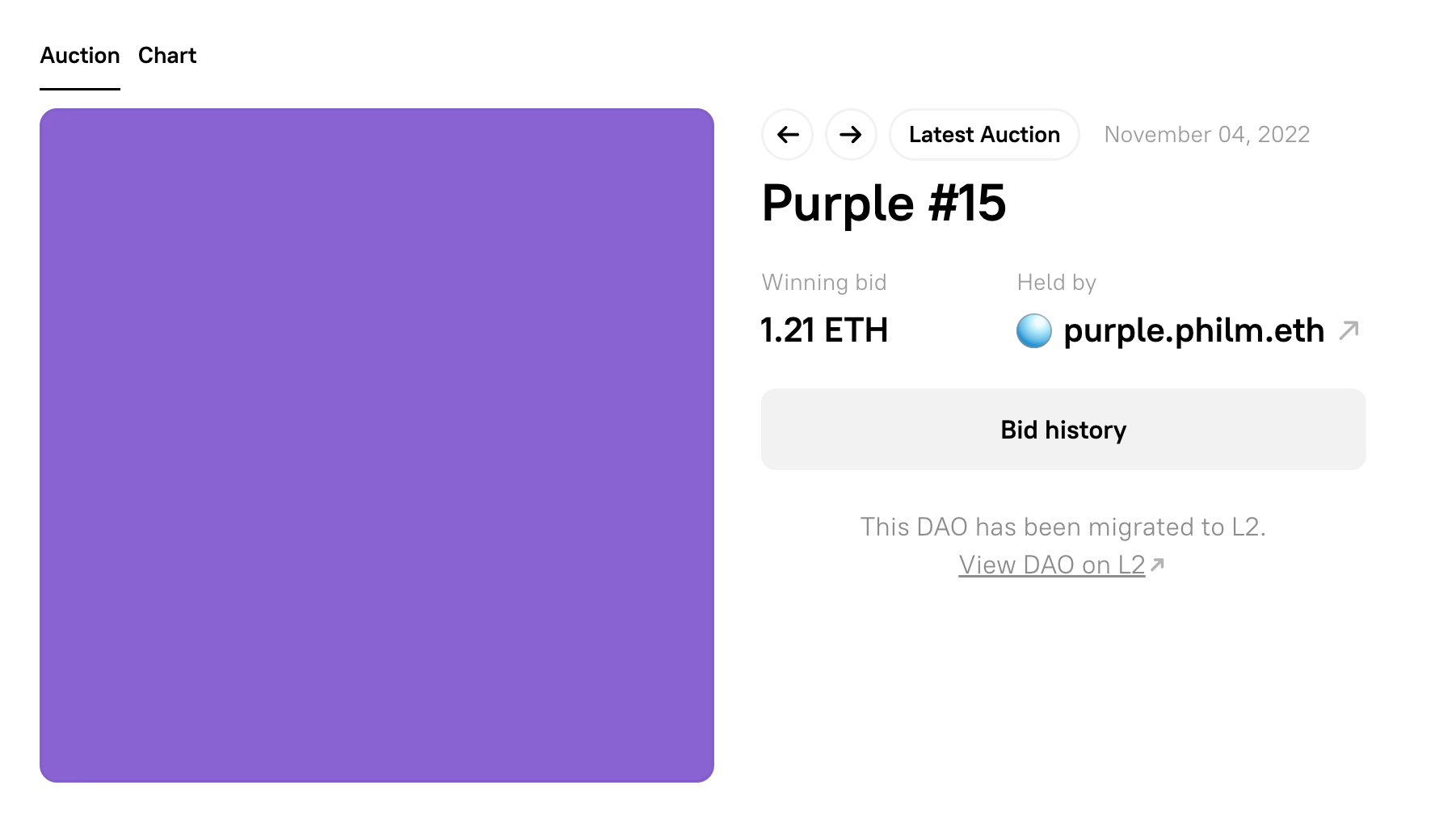
Since joining Purple, Farcaster has grown ~50x and given rise to a thriving ecosystem of developers, artists, and coins. Merkle Manufactory, the company behind Warpcast and the primary protocol and client developer, is reportedly raising a new fundraising round at a $1B valuation. Things seem to be humming on Farcaster.
But how has Purple fared amid this backdrop of rapid growth?
Slow and steady
During the same time period that Farcaster onboarded 320,000 new users, Purple continued to add 1 new member per day through its automated daily auction.
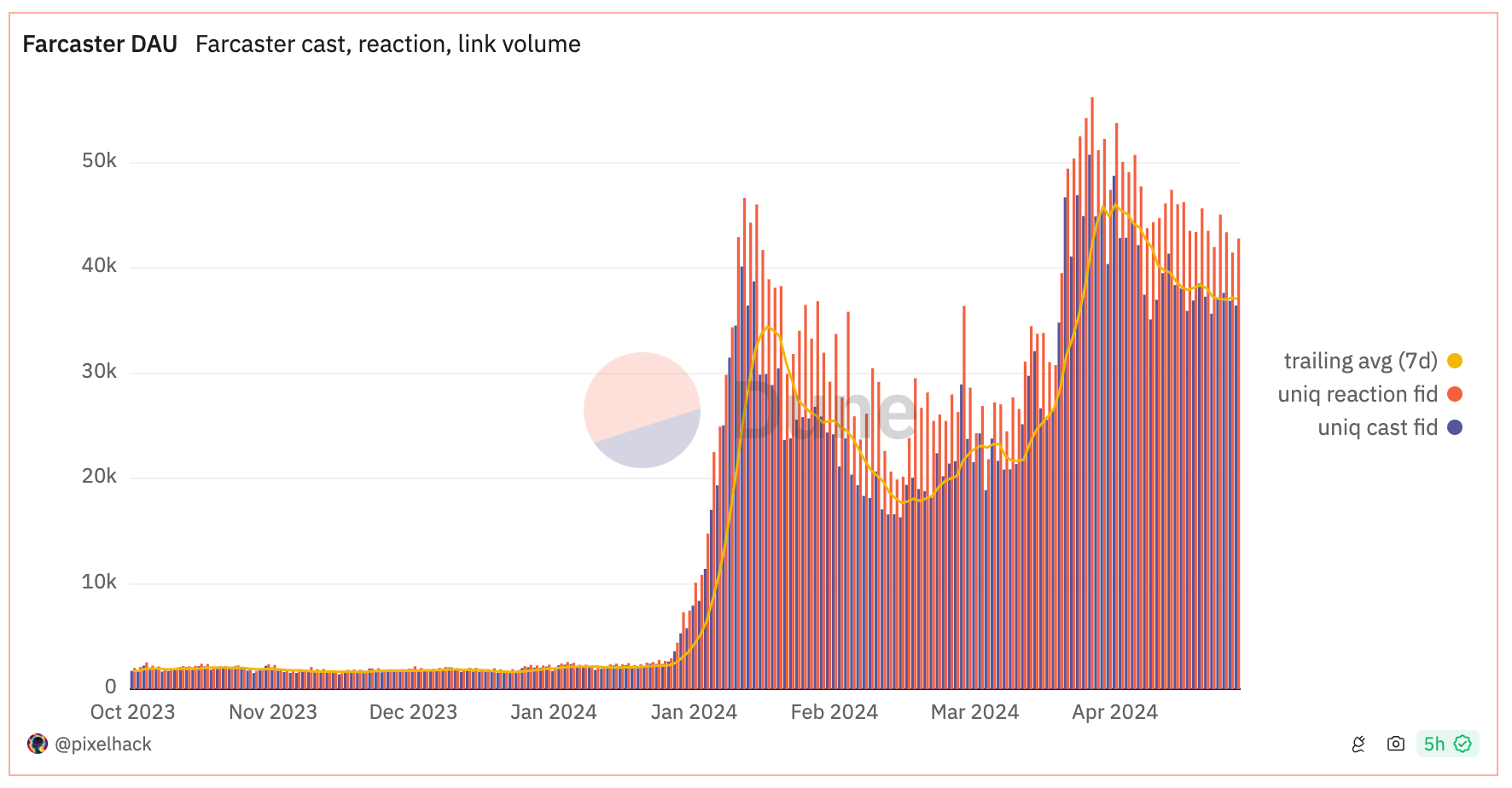
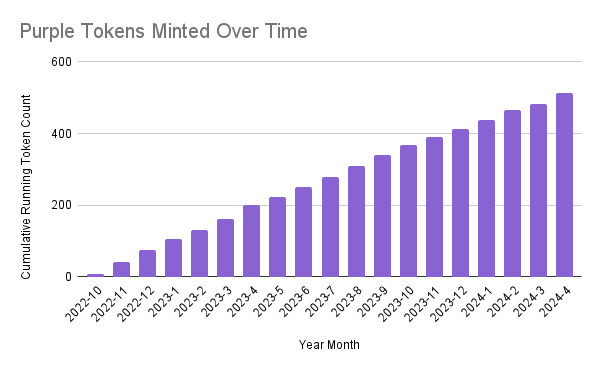
There are currently 513 Purple tokens across 388 wallets, and the average Purple member wallet holds just over 1 token. The entry price has come down significantly and typically hovers between 0.1 and 0.2 ETH per token.
The DAO has voted on ~60 unique proposals, including a recent decision to move the onchain infrastructure from mainnet Ethereum to Base in an effort to lower transaction fees for members. This transition split the treasury across two chains, but the current liquid treasury value is ~28 ETH with an additional ~12 ETH earmarked in a multisig for small grants.
Lifetime auction sales have generated ~120 ETH, of which 80 ETH has been distributed through a combination of grants, retroactive funding, and payment to contributors who performed services on behalf of the DAO.
What's going well
Purple is still alive.
This shouldn't be taken for granted. Most DAOs and tokens have a very short half-life and fail to meaningfully hold attention for longer than a few weeks. The fact that Purple is still active and generating ETH is no small feat.
This success is in large part due to the choice to run Purple on the Nouns stack which requires little to no ongoing maintenance. Daily auctions have been running smoothly for ~500 days and continue to operate on Base. The token seems to have found a stable price that consistently generates $450 / day for the DAO.
Purple and its members have been highly influential within the Farcaster ecosystem. Channels, originally created to support organizations like Purple, have become a key feature within the Farcaster client architecture and given rise to other interest groups. Channels have allowed Purple members to reduce reliance on third party tools like Discord and Telegram and instead communicate directly though the protocol.
Culturally, Purple has established a strong sense of rewarding builders through its retroactive grants programs. We've distributed hundreds of thousands of dollars to developers and builders in the Farcaster ecosystem that otherwise wouldn't have received compensation for their work. Purple continues to be a backstop for projects that are either too weird or not commercially viable for traditional funding sources.
What's not going well
Purple hasn't benefitted as much from Farcaster's growth as I would have expected.
As the main DAO associated with the Farcaster protocol, Purple was extraordinarily well positioned to benefit from the tailwind of the recent growth. The influx of new users was expected to generate tremendous demand for a scarce membership token, driving the daily auction price up. Instead, the token price barely budged and Purple seems to have gained little to no mindshare among new users who favor ERC-20 memecoins like Higher and Degen.
While Farcaster has made >$1M in protocol revenue, Purple is capturing almost none of that through the daily auctions.
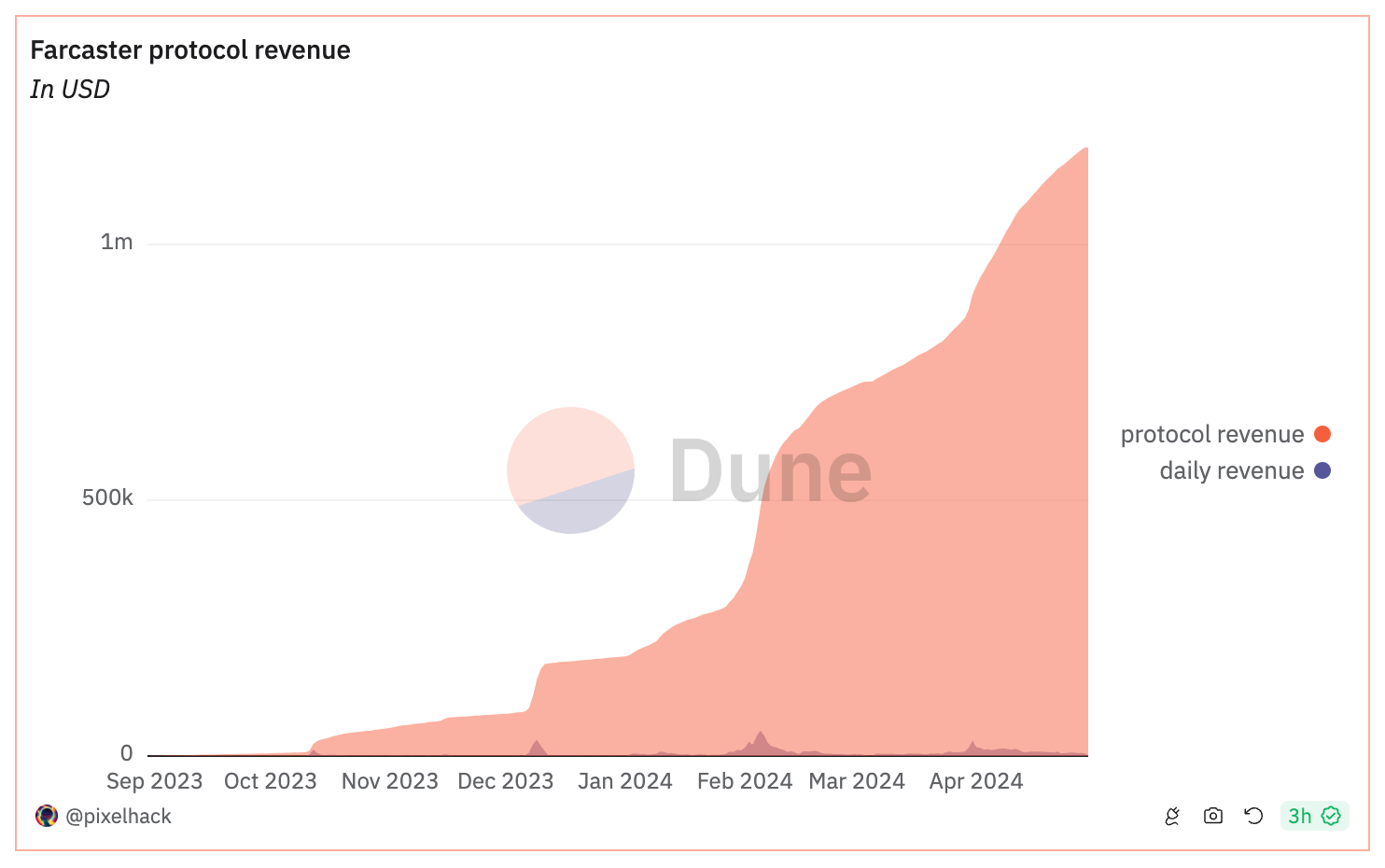
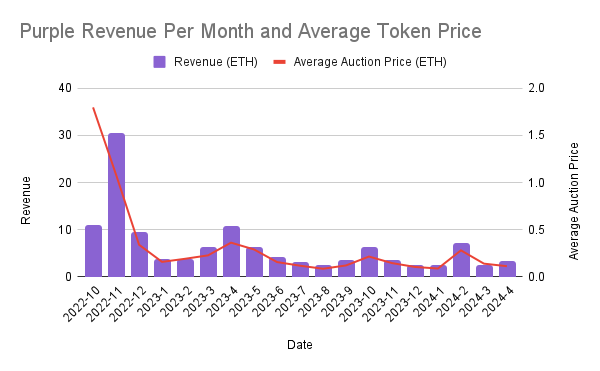
As a Nounish organization, Purple is governed by its members who are responsible for submitting proposals and voting on how the treasury is used. Revenue growth is flat, but what about onchain proposals?
Since inception, the average number of proposals per month has increased from 3 to 4, with several outlier months having high proposal activity. As the number of unique members has grown, the percentage of members who submit proposals has dropped dramatically.
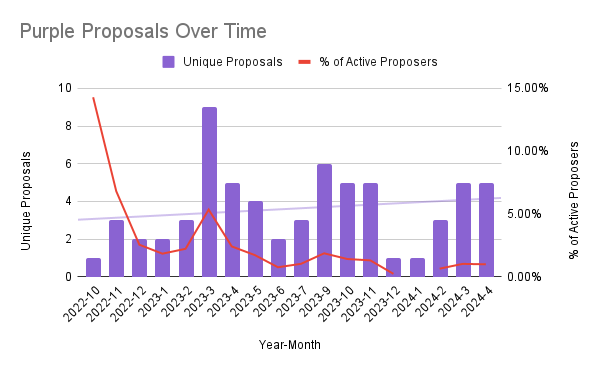
The number of unique voters per month is a more promising trend, although we've struggled to maintain higher than 50% participation outside of a few contentious early proposals. The shift to Base dramatically reduced transaction fees for voting and, while positive, it remains to be seen if that will be enough to drive more active participation.
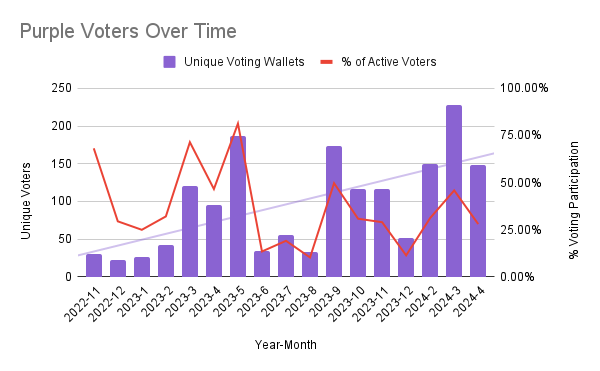
Why Purple has stagnated
- It's too expensive to join. Most people don't have $500 to spend on a status symbol. This is why ERC-20 tokens have captured the attention of millions – you can participate with very little capital and still be part of a movement.
- It's too hard to get things done. Proposals are daunting. Even small asks are met with intense scrutiny from a large and sometimes hostile group of strangers who demand extensive documentation. This discourages people from creating proposals or applying for grants.
- It's unclear what the priority is. We fund public goods, but it's murky. We've also funded meetups, conferences, and artist commissions. People vote on proposals based on vibes, without a clear heuristic for whether or not something is clearly within our mission.
What we can do about it
- Lower the barrier to entry. Purple needs to broaden its ambition to become the global membership token for all Farcaster users. A small percentage of Purple members who win a daily auction should have voting and proposal submission rights, but being part of Purple should be seen as something accessible that all Farcaster users are entitled to. This means expanding the criteria for what qualifies as being a Purple member and having certain decisions open to a wider and more representative sample of Farcaster users.
- Give more autonomy to small teams. Small, nimble teams with full autonomy over their budget and goals are more effective than lumbering bureaucracies. We need to develop a process to design and allocate a budget that is overseen by trusted individuals who are compensated for their time through a combination of ETH and tokens. In practice, this means identifying which decisions are convex and moving to delegate responsibility and decision making rather than getting bogged down in endless debates.
- Clarify the mission. Everyone who joins Farcaster should know what Purple does and be able to repeat it to their friends in one sentence. We should have an overwhelmingly positive brand association and represent a new way of distributing funds at internet scale. We can learn a lot from memecoins and their ability to attract attention through left-curve slogans that resonate with a large and passionate base.

How to get involved
As always, the best way to contribute to Purple is by purchasing a membership token through the daily auction. The conversation is happening on Warpcast, where token holders are invited to debate and discuss ideas in an open forum.

The beauty of Purple is also its weakness; as a highly decentralized organization, it has tradeoffs compared to traditional startups and non-profits. Democracy is messy, but the promise of a community owned funding model is worth it.
Thanks to Chris Carella for reading drafts of this post, and for his tireless work to guide us towards the best outcome.